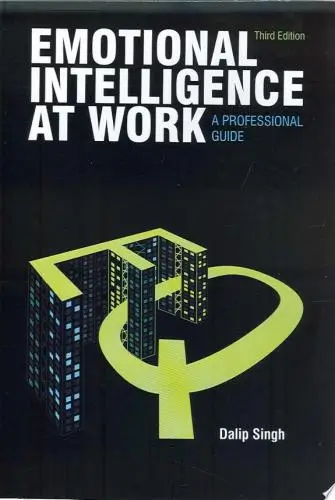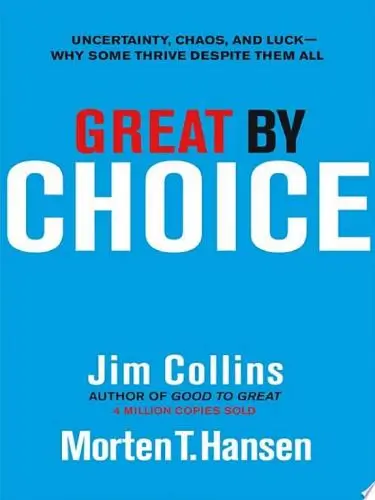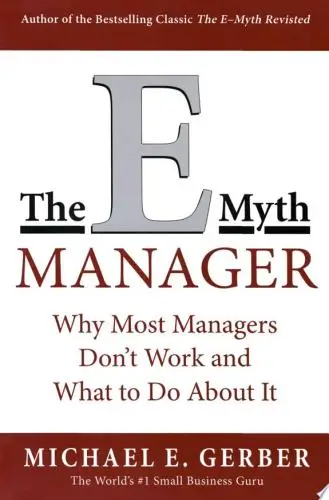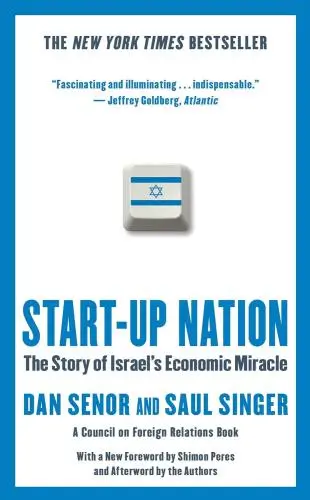
The Mythical Man-Month
Essays on Software Engineering
What's it about?
Mythical Man-Month delves into the complexities of managing software projects, emphasizing the challenges of coordination and communication in larger teams. Brooks introduces the concept of "The Mythical Man-Month" - the idea that adding more manpower to a late software project only makes it later. He offers insights into effective project management strategies, highlighting the importance of teamwork, planning, and clear communication. This timeless classic is a must-read for anyone involved in software development or project management.
About the Author
Frederick Brooks Jr., a pivotal figure in computer science, authored "The Mythical Man-Month," exploring software engineering challenges. His work emphasizes project management and the complexities of software development, offering insights into the limitations of adding manpower to late software projects, encapsulated in Brooks's Law. His contributions significantly shaped the field's understanding of software project management.
10 Key Ideas of The Mythical Man-Month
Build One to Throw Away; You Will, Anyway
Embrace the inevitability of a system rewrite.
The first attempt at building a complex system is likely to fail due to unforeseen problems and misunderstood requirements.
Accepting this reality encourages planning for a prototype phase, allowing for exploration and understanding of the problem space without the pressure of creating a perfect solution on the first try.
This approach mitigates risk by providing valuable insights and learnings that can be applied to the final, more refined system.
Learn DeeperStart with a Prototype: Before diving into the final product, begin your project by creating a prototype. This initial version should focus on exploring the main concepts and identifying potential issues without the pressure of perfection.
Embrace Iterative Development: Accept that your first attempt might not be your last. Use each iteration as a learning opportunity to refine and improve the system based on feedback and new understandings gained from the prototype phase.
Plan for Flexibility: From the outset, design your project plan to accommodate changes. This means allocating time and resources for potential reworks or adjustments based on insights from your initial attempts.
Gather Diverse Feedback: Regularly seek input from different stakeholders, including end-users, during the prototype and development phases. This diverse feedback can uncover unforeseen problems and requirements you might have missed.
Document and Analyze Failures: When something doesn’t work as expected, document what happened and why. Use these findings to adjust your approach and avoid similar pitfalls in future iterations.
- Example
A software development team is tasked with creating a new mobile application. They start by building a basic prototype that includes the core functionality but lacks the full features planned for the final product. This prototype is used to gather user feedback and identify technical challenges, which inform the development of the final, more polished app.
- Example
An engineering firm is designing a new consumer electronics device. The first version they build is a rough model intended to test the concept and ergonomics, not the final look or feel. Insights gained from this prototype lead to significant design changes that improve the final product's usability and appeal.
The Surgical Team Approach to Development
Optimize team structure by organizing around a 'surgical team' model, where a small number of skilled 'surgeons' (lead developers) write code.
They are supported by others who handle less critical tasks such as documentation, testing, and tool support.
This approach concentrates the critical work in the hands of the most experienced developers, enhancing quality and efficiency.
At the same time, it leverages the broader team's skills for supporting activities.
Learn DeeperIdentify Your 'Surgeons': Look within your team to identify the most skilled and experienced developers. These individuals should not only have technical prowess but also a deep understanding of the project's goals and the ability to solve complex problems efficiently.
Define Roles Clearly: Once you've identified your 'surgeons', clearly define the roles of the supporting team members. Assign tasks such as documentation, testing, and tool support based on each member's strengths and skills. This ensures that everyone knows their responsibilities and how they contribute to the project's success.
Foster Collaboration: Encourage open communication and collaboration between the 'surgeons' and the rest of the team. This can be facilitated through regular meetings, shared documentation, and collaborative tools. It's crucial that the 'surgeons' share their knowledge and insights with the team to foster a learning environment.
Implement Continuous Feedback: Establish a system of continuous feedback where the 'surgeons' review the work done by the team and provide constructive feedback. This not only improves the quality of the project but also helps in the professional growth of the team members.
Evaluate and Adjust: Regularly evaluate the effectiveness of the surgical team approach. Be open to making adjustments based on what is working well and what isn't. This might mean redefining roles, changing processes, or even rethinking who is best suited to be a 'surgeon'.
- Example
In a software development company, two lead developers ('surgeons') are tasked with writing the core code for a new application, while a team of junior developers, testers, and a technical writer handle the creation of unit tests, bug tracking, and documentation respectively.
- Example
In a web development project, the most experienced developer is designated as the 'surgeon', focusing on the complex backend logic and database design. Meanwhile, other team members are responsible for frontend development, UI/UX design, and user testing, ensuring a well-rounded and efficient approach to project completion.
No Silver Bullet - Essence and Accident in Software Engineering
Acknowledge that there is no single revolutionary advancement ('silver bullet') that will dramatically enhance productivity or reduce the complexity of software development.
Challenges in software engineering stem from both essential complexities (inherent in the nature of software) and accidental complexities (arising from tools and procedures).
Focus on reducing accidental complexity through better tools and processes, but understand that essential complexity must be managed through skillful design and project management.
Learn DeeperEmbrace Continuous Learning: Stay updated with the latest tools and methodologies in software development. Dedicate time each week to learn something new or improve your understanding of existing tools.
Implement Agile Practices: Break down your projects into smaller, manageable tasks. Use iterative cycles (sprints) to continuously evaluate and adapt your approach, allowing for flexibility and better management of complexity.
Focus on Good Design Principles: Invest time in designing your software architecture. Use principles like modularity, encapsulation, and abstraction to manage essential complexity, making your software easier to understand, modify, and extend.
Leverage Code Reviews: Regularly review code with your peers. This practice helps catch accidental complexities early, like unnecessary code or overly complicated solutions, and encourages knowledge sharing.
Automate Repetitive Tasks: Identify repetitive tasks in your development process, such as testing or deployment, and automate them. This reduces accidental complexity and frees up time to focus on solving the more challenging aspects of your projects.
- Example
A team implementing Agile practices might hold a 15-minute stand-up meeting every morning to discuss what they did yesterday, what they plan to do today, and any obstacles they're facing. This helps in quickly identifying and addressing accidental complexities.
- Example
An example of automating repetitive tasks is setting up a Continuous Integration/Continuous Deployment (CI/CD) pipeline. Whenever code is pushed to the repository, it automatically runs tests and deploys the application if the tests pass, reducing manual errors and speeding up the development process.
Incremental Build Model for Development
Adopt an incremental approach to software development, where the project is divided into smaller, manageable segments that can be developed, tested, and integrated one at a time.
This allows for early detection of errors, easier integration, and more immediate feedback from users, leading to a more flexible and adaptable development process.
It contrasts with the 'big bang' approach, which often leads to integration and quality issues late in the project.
Learn DeeperStart Small: Break down your big project into smaller, more manageable tasks. This makes it easier to focus and complete each part without feeling overwhelmed.
Test Early, Test Often: After completing a segment, test it thoroughly before moving on. This helps catch errors early, saving time and effort in the long run.
Seek Feedback: Once a segment is developed and tested, share it with users or stakeholders for feedback. Their insights can help you make necessary adjustments early, ensuring the final product meets their needs.
Iterate: Use the feedback to refine and improve the segment. Then, proceed to the next part of the project, applying the lessons learned from the previous steps.
Integrate Regularly: As each segment is completed and refined, integrate it with the rest of the project. Regular integration helps identify compatibility issues early, making them easier to address.
- Example
Developing a new website: Instead of launching the entire site at once, start by building and testing the homepage. Once it's polished and functional, move on to developing the next set of pages, such as the 'About Us' and 'Contact' pages, testing and integrating them as you go.
- Example
Creating a mobile app: Begin with the core functionality, such as user login and profile creation. Test this thoroughly before adding additional features like messaging or notifications, ensuring each new function works well with the existing framework before proceeding.
The Importance of Documentation and Specifications
Prioritize thorough documentation and clear specifications from the outset of the project.
These serve as a contract between different parts of the team (e.g., developers and testers) and help ensure that everyone has a consistent understanding of the project goals, features, and implementation details.
Good documentation aids in maintaining the system over its lifetime and eases the onboarding of new team members.
Learn DeeperStart with a Clear Outline: Before diving into the project, take time to outline the goals, features, and any specific requirements. This will serve as a foundation for your documentation.
Regularly Update Documentation: As the project evolves, so should your documentation. Make it a habit to update documents whenever changes are made, ensuring that all team members have access to the latest information.
Use Tools to Simplify the Process: Leverage documentation tools like Confluence or Google Docs that allow for collaborative editing and easy access. This can help keep the documentation process streamlined and more manageable.
Incorporate Feedback Loops: Encourage team members to review and provide feedback on documentation. This can help identify gaps or ambiguities early on, making the documentation more effective and useful.
Make Documentation Accessible: Ensure that all team members know where to find the documentation and understand how to use it. Consider creating a quick guide on navigating and interpreting the documents.
- Example
A software development team is working on a new app. Before starting, they create a comprehensive document detailing the app's purpose, target audience, core features, and technical specifications. This document is shared with all team members and updated regularly as the project progresses.
- Example
A marketing team is planning a campaign. They start by documenting their strategy, including goals, target demographics, timelines, and expected outcomes. This document serves as a reference throughout the campaign, ensuring everyone is aligned and informed.
Deeper knowledge. Personal growth. Unlocked.
Unlock this book's key ideas and 15M+ more. Learn with quick, impactful summaries.
Read Full SummarySign up and read for free!
The Mythical Man-Month Summary: Common Questions
Experience Personalized Book Summaries, Today!
Discover a new way to gain knowledge, and save time.
Sign up for our 7-day trial now.
No Credit Card Needed

Similar Books

Emotional Intelligence at Work
Dalip Singh
Seeing the Big Picture
Kevin Cope
Leadership Is Concept Heavy
Dr. Enoch Antwi
Great by Choice
Jim Collins
The Leader′s Guide to Coaching in Schools
John Campbell
Preparing School Leaders for the 21st Century
Stephan Gerhard Huber
The E-Myth Manager
Michael E. Gerber
Leadership Is Language
L. David Marquet
Start-up Nation
Dan Senor
The Founder's Dilemmas
Noam WassermanTrending Summaries

Peak
Anders Ericsson
Never Split the Difference
Chris Voss
Smart Brevity
Jim VandeHei
The Psychology of Money
Morgan Housel
The First 90 Days
Michael D. Watkins
Atomic Habits
James Clear
Thinking, Fast and Slow
Daniel Kahneman
The Body Keeps the Score
Bessel van der Kolk M.D.
The Power of Regret
Daniel H. Pink
The Compound Effect
Darren HardyNew Books

The Art of Spending Money
Morgan Housel
$100M Offers
Alex Hormozi
A Candle for Kiri
Edna Mae Holm
Principles of Marketing, Global Edition
Gary Armstrong
Serpent Rising: The Kundalini Compendium
Neven Paar
Feeling Is the Secret
Neville Goddard
The 100 Best Business Books of All Time
Jack Covert
My Oxford Year
Julia Whelan
Trading in the Zone
Mark Douglas
